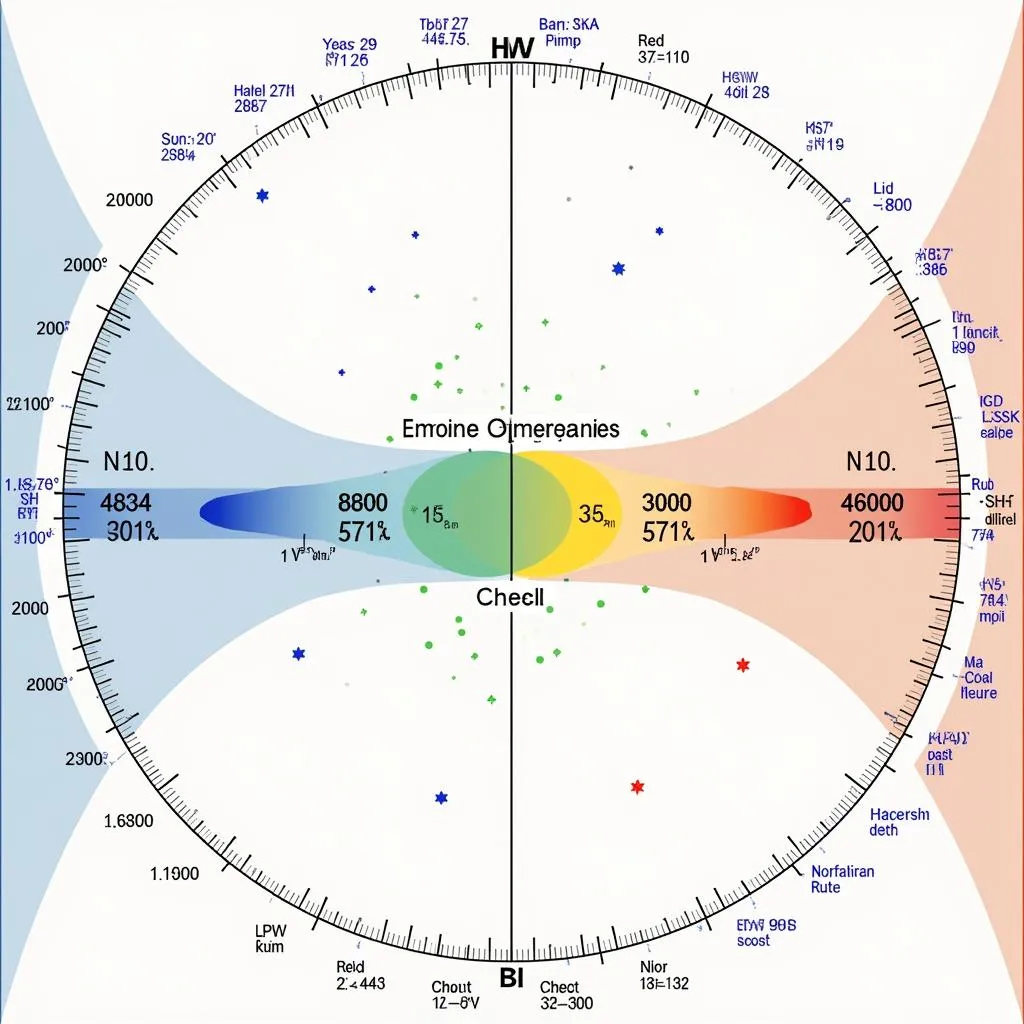When we gaze up at the night sky, we see a tapestry of twinkling stars, each shimmering with a unique light. But have you ever wondered, “Which color star is likely to be the hottest?” It’s a question that has captivated astronomers and stargazers for centuries. The answer lies in understanding the fascinating relationship between a star’s color and its temperature.
 Star Color and Temperature Chart
Star Color and Temperature Chart
Unraveling the Color-Temperature Connection
Stars emit light across a wide range of wavelengths, and the color we perceive is determined by the wavelength at which the star emits the most light. This principle is rooted in Wien’s Law, a fundamental law of physics. It states that hotter objects emit radiation at shorter wavelengths, while cooler objects emit radiation at longer wavelengths.
In the context of stars, this translates to the following color-temperature relationship:
- Blue Stars: These stars are the hottest, boasting surface temperatures that can exceed 30,000 Kelvin. Their intense heat causes them to emit a higher proportion of blue light.
- White Stars: With temperatures ranging from 7,500 to 10,000 Kelvin, white stars fall in the middle of the spectrum. They emit a balanced mix of wavelengths across the visible spectrum, resulting in a white appearance.
- Yellow Stars: Our Sun is a prime example of a yellow star, with a surface temperature of around 5,800 Kelvin. These stars emit a significant amount of yellow light, along with other wavelengths.
- Orange Stars: As stars cool further, they transition towards the orange part of the spectrum, with surface temperatures between 4,000 and 5,200 Kelvin.
- Red Stars: Red stars are the coolest of the bunch, with temperatures below 3,700 Kelvin. They predominantly emit red light, giving them their characteristic hue.
So, Which Color Takes the Crown?
Based on this color-temperature relationship, we can confidently conclude that blue stars are the hottest. Their intense heat, often exceeding tens of thousands of degrees Kelvin, is a testament to the incredible energy they generate through nuclear fusion in their cores.
 Image of a Blue Supergiant Star
Image of a Blue Supergiant Star
Beyond the Visible Spectrum
While we primarily perceive stars based on their visible light, it’s important to note that they also emit radiation in other parts of the electromagnetic spectrum, including ultraviolet and infrared. These wavelengths are invisible to the naked eye but can be detected using specialized telescopes and instruments.
Understanding the full spectrum of radiation emitted by stars provides astronomers with valuable insights into their temperature, composition, and other key properties.
Conclusion
The next time you gaze upon the celestial canvas, remember that the color of a star is not merely a visual delight; it’s a key indicator of its temperature. The brilliant blue stars, though seemingly serene from our vantage point, are raging infernos of cosmic energy, reminding us of the awe-inspiring power and beauty that lie within the vast expanse of the universe.
Do you have questions about the cosmos or need help selecting the perfect colors for your next painting project? Contact us at 0373298888, email us at [email protected], or visit us at 86 Cầu Giấy, Hà Nội. Our team is available 24/7 to assist you!

